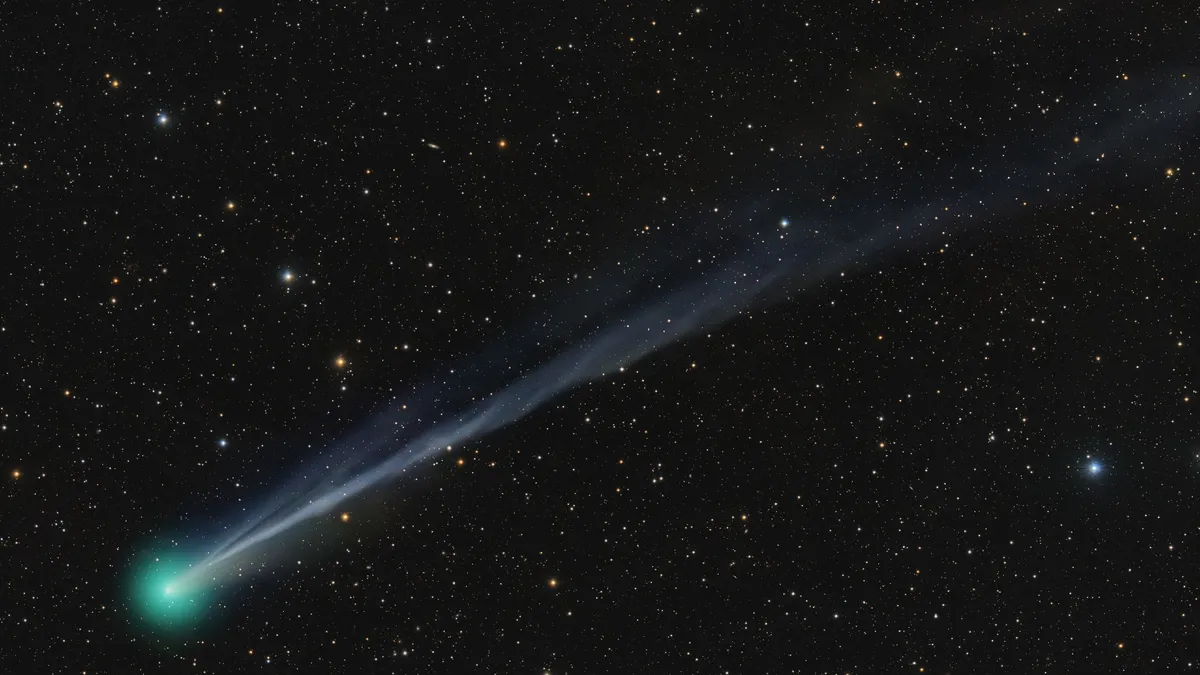
The highly anticipated Comet C/2025 A6 (Lemmon) is just weeks away from a close encounter with Earth, potentially making it visible to the naked eye in the October night sky. This celestial event promises breathtaking views of the comet and its magnificent tail, as captured by talented astrophotographers around the globe. Keep reading for all the details on this wandering comet and how to best observe it.
Astronomers first discovered Comet C/2025 A6 (Lemmon) on January 3, 2025, using a powerful 60-inch telescope at the Mt. Lemmon Observatory in Arizona. Since its discovery, the comet has been traveling deeper into the solar system and is set to make its closest approach to Earth on October 21, 2025, passing at a distance of just over 55 million miles (89 million kilometers) from our planet. Following this close encounter, the comet will reach perihelion—the point in its orbit closest to the Sun—on November 8, 2025.
Since its initial observation, Comet C/2025 A6 (Lemmon) has experienced a significant brightness increase, escalating from a magnitude of +21.5 in January to approximately +7 or even brighter. This brightening trend raises hopes that the comet could become visible to the naked eye, especially from dark sky locations. It’s important to note that in astronomy, the magnitude scale is used to measure an object's brightness; the lower the number, the brighter the object. Under ideal dark sky conditions, the human eye can typically see celestial bodies with a magnitude of +6.5.
However, comets are notoriously unpredictable. The recent increase in brightness could be a brief outburst rather than a consistent rise as it approaches the Sun. Only time will reveal the true nature of this comet's visibility.
At present, Comet C/2025 A6 (Lemmon) can be observed as a diffuse smudge of light through binoculars. Meanwhile, skilled astrophotographers have been utilizing specialized cameras attached to powerful telescopes to capture stunning long-exposure images of the comet's bright nucleus and twisting ion tails. These breathtaking photographs showcase the beauty and complexity of this celestial wanderer.
Astrophotographer Aleix Roig captured an exquisite image of Comet Lemmon on September 22, 2025, from the moonless skies above Catalonia, Spain. This photograph showcases the haunting glow of the central coma, from which a spectral ion trail flows. Roig noted the comet's greenish coma, a result of diatomic carbon (C2) fluorescing in sunlight, and remarked on its developing tail that extends away from the Sun, making Lemmon a striking reminder of the icy bodies that traverse the inner solar system.
On September 25, Jānis Šatrovskis created a stunning timelapse image, illustrating the comet's movement relative to the starfield from Burtnieki, Latvia. Additionally, Dan Bartlett provided detailed views of the comet over several nights from his backyard in June Lake, California, revealing the evolving structure of its tail as it responded to the solar wind.
Chris Schur produced an impressive hour-long exposure of Comet Lemmon over Payson, Arizona, on September 30. While the comet appeared as a soft glow in binoculars, long exposure imaging revealed a captivating object with a lovely teal-colored head, transitioning into a pair of tails—one golden-hued made of dust and a long blue streamer of gas. These images highlight the dynamic nature of the comet's structure.
In early October, X user Bray Falls captured another stunning view of C/2025 A6 (Lemmon) streaking across the skies above Austin, Texas, showcasing the subtle perturbations in the tail caused by solar wind. Similarly, Chuck's Astrophotography shared a magnificent view on X, revealing incredible detail in the tail against a backdrop of distant stars.
For those eager to witness Comet Lemmon, the best viewing opportunities will occur in the hours leading up to dawn in early October. The comet can currently be located between the constellations Ursa Major and Leo Minor. After reaching perihelion on November 8, Comet Lemmon will embark on an elliptical orbit lasting 1,351 years, traveling out to a distant range of 243 times the Earth-Sun distance before beginning its return to the inner solar system.
Don’t miss the chance to observe this spectacular comet as it graces our night sky in the coming weeks!